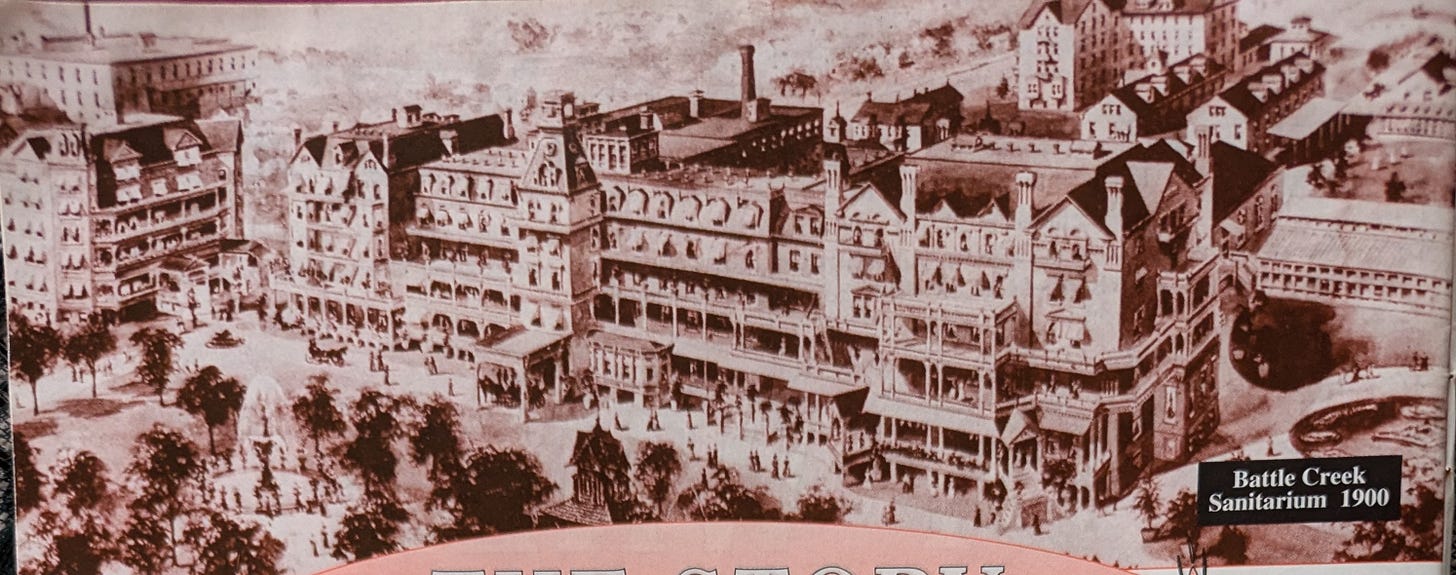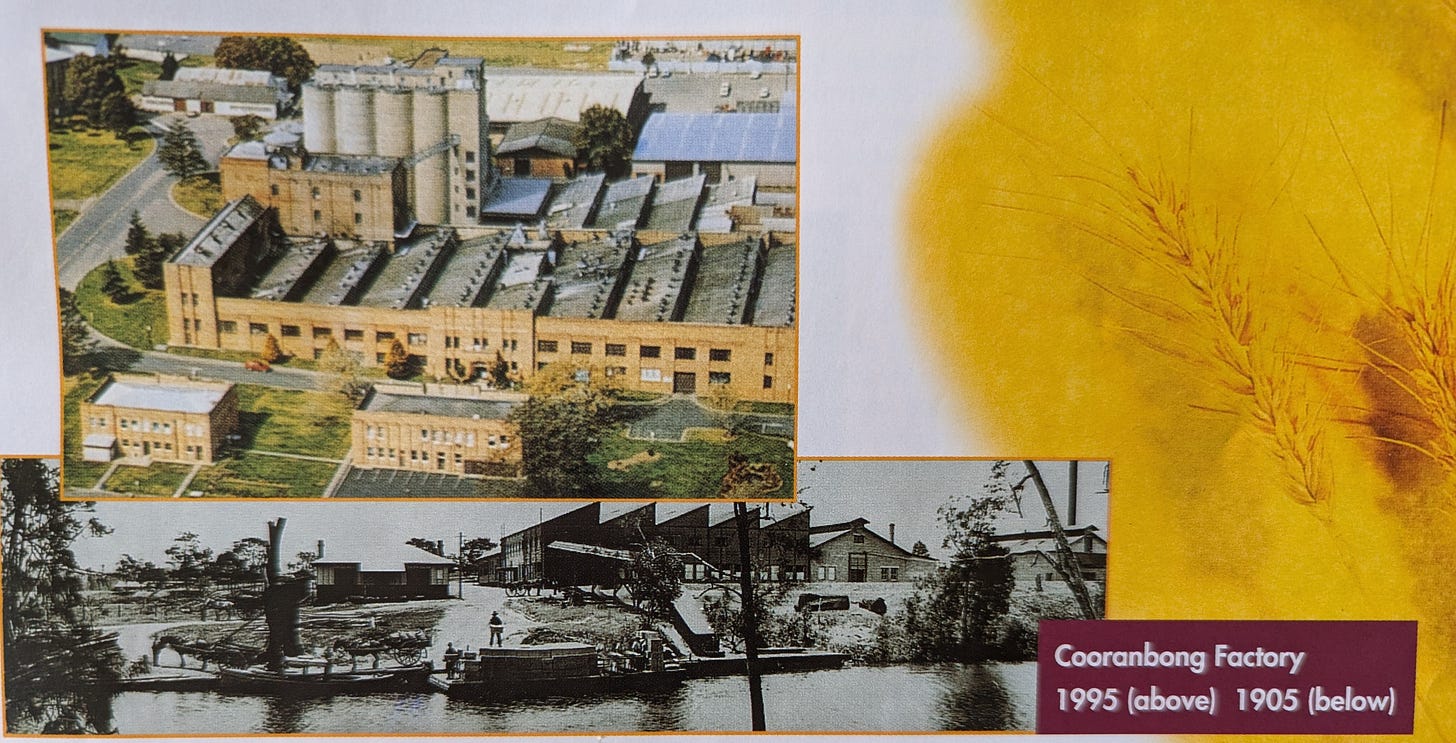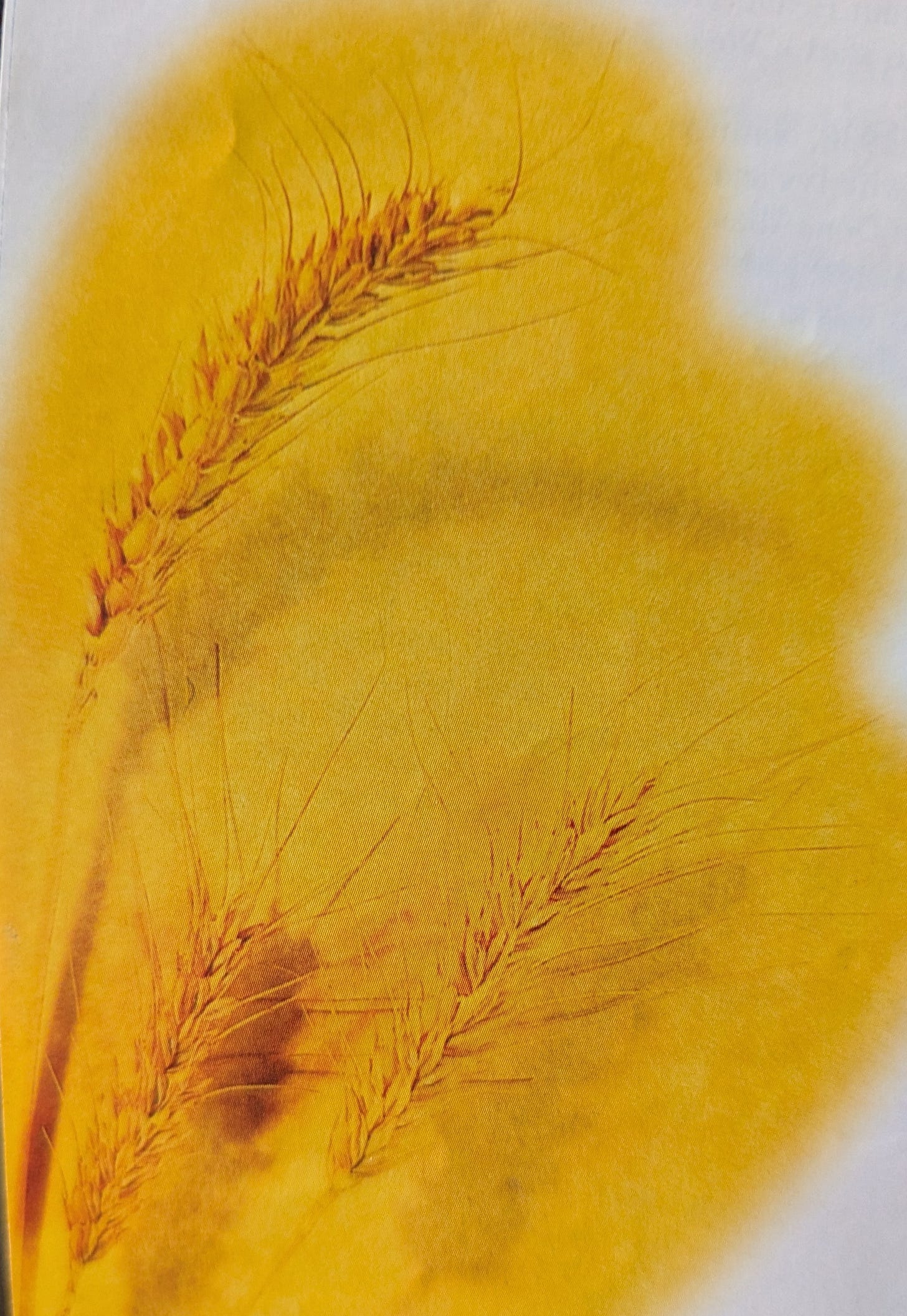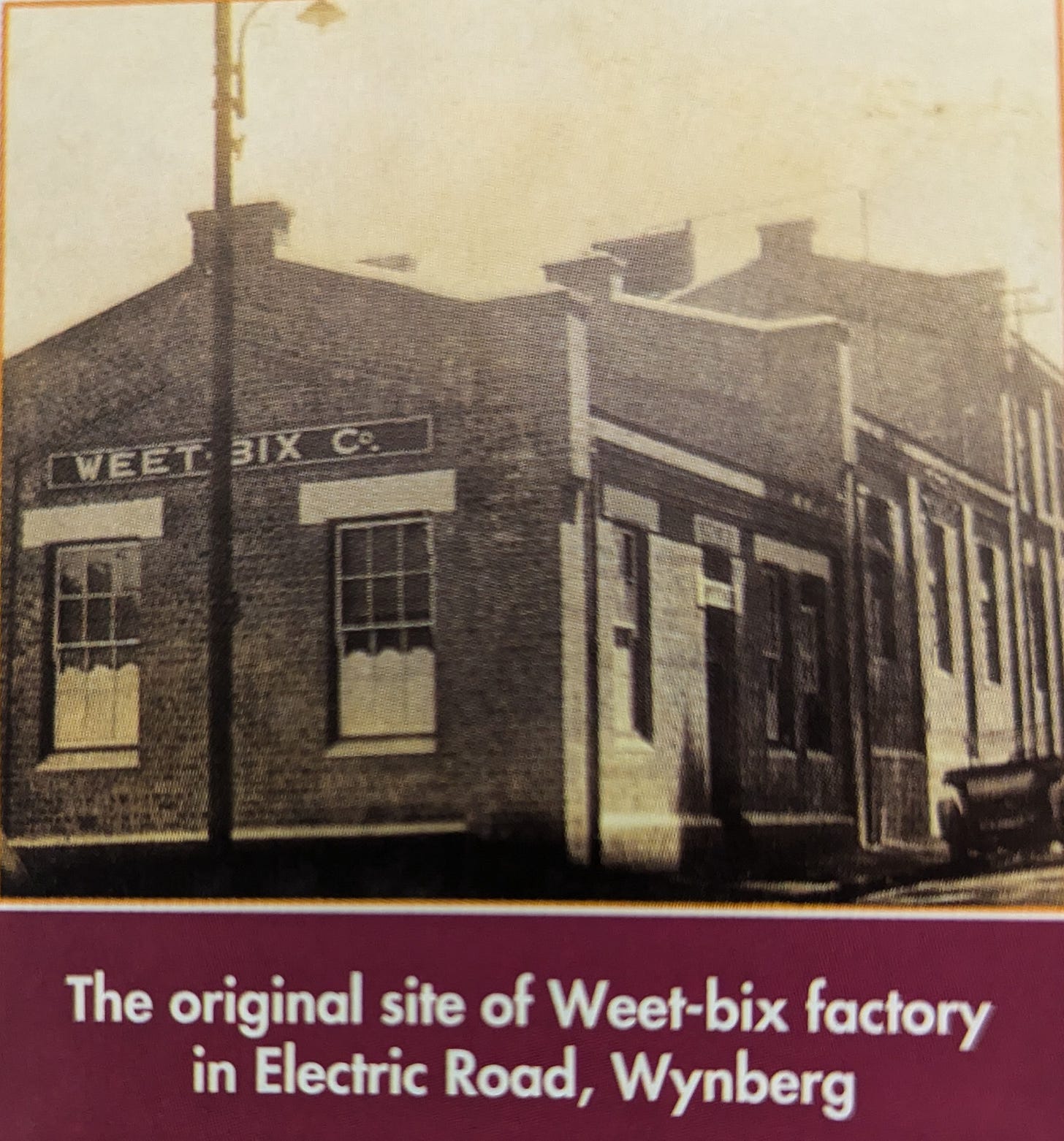When you eat your Weet-Bix or Weetabix you are reaching back to the cereal revolution of the 1890s under Dr John Harvey Kellogg of Battle Creek Sanatarium, Michigan.
I wrote this article in 1997 and placed it in our South African Signs of the Times of September/October, 1997.
Every time you bite into Weet-Bix you are munching more than 100 years of Adventist History!
Beginnings at Battle Creek, Michigan, USA
The Seventh-day Adventist movement began in the middle of the 19th century with its focal point in New England, USA. The name by which the Church is now known was adopted as a denominational title in 1860.
One of the leaders of the church was James White who served as president of the General Conference for an aggregate of ten years. He had earlier married Ellen Harmon who loyally stood by his side in loving support. Ellen White became an influential voice amongst the members in her own right.
In the 1860s Ellen White led out in an emphasis on healthful living which gathered momentum through the following decades. In 1873 James and Ellen White encouraged a promising young man, John Harvey Kellogg, to take the medical course. He did this and was later appointed as superintendent of the Western Health Reform Institute in Battle Creek, Michigan.
Under the leadership of Dr John Kellogg, the Battle Creek Institute developed by the end of the century into a hospital and sanitarium that demanded world-wide attention.
A Picture of the Battle Creek Sanitarium in Michigan founded by Dr John Harvey Kellogg.
In addition to his medical interests, Dr John Kellogg also showed great acumen in developing health foods and breakfast cereals. Along with his brother, Will Keith, he invented cornflakes and introduced other dry cereal breakfast foods, meat substitutes and peanut butter to the market. From that beginning, Kellogg has become a world-wide synonym for breakfast foods.
The Australian Development
In 1895 a group of American immigrants living in Melbourne, Australia, began distributing health foods, imported from Battle Creek, Michigan, USA. The supply could not keep up with the demand and local manufacture became inevitable.
Production of Caramel Cereal, Granola and the first peanut butter made in Australia commenced in 1898. Later that year operations moved to Cooranbong. That was the beginning of the Sanatarium Health Food Company, owned and operated by the Seventh-day Adventist Church in Australia.
Pictures of the Sanatarium Health Food Company in Cooranbong, Australia, in 1905 and in 1995.
Today, the Company is a recognized market leader in the area of nutritious and tasty food products, employing 1500 across Australia and New Zealand with an annual turnover of 220 million Australian dollars. The current General Manager of the company is a South African, Allan Staples, son of Dr Warren and Betty Staples of Bethlehem [the facts in this paragraph reflect the position in 1997 when I wrote this article].
A G D Shannon, an astute Australian businessman and devout Seventh-day Adventist, became involved in the breakfast cereal business in the early 1920s.
It was A G D Shannon of Australia who took the simple wheat plant and turned it into the popular Weet-Bix.
Experimenting with pure wheat, he perfected his technique and launched his new product - Weet-Bix. He invited a former schoolmate, Norman F Jeffes, to join him in the erection of his Sydney factory. Altogether five Weet-Bix factories were established in Australia.
In 1927 Mr Shannon asked Mr Norman F Jeffes to establish a factory in Christchurch, New Zealand. In the following year Shannon moved Jeffes to Auckland to start his second New Zealand Weet-Bix factory.
Towards the end of the 1920s Shannon sold his seven factories to the Sanitarium Health Food Company, but not before he had asked Jeffes to start a Weet-Bix factory in South Africa.
The South African Development
In September, 1930, Norman together with his wife Ivy and their four children, Don, Allan, Loyla and Natalie, arrived in Cape Town. This was to be the beginning of the South African saga of Weet-Bix.
In the center are Mr and Mrs Norman and Ivy Jeffes; at the top their son, Don; on the left, Allan; on the right, Loyla; at the bottom, Natalie.
Although South Africa was gripped by drought and in the throes of the Great Depression, young Norman launched into his task. He hit upon the idea of using the old power station in Electric Road, Wynberg. The first Weet-Bix was produced in this factory in 1931.
Norman Jeffes turned this old power station into his Weet-Bix factory where the first product was produced in 1931.
The factory provided employment for many Adventists through the years and the Jeffes’ home became a social center for Christian young people and medical students. [I remember those days in the 1930s and was just too young to be part of the scene. I felt it at the time. In 1940 and 1941, I was 13 and 14 and often wished I could go along].
Right from the beginning Weet-Bix became a phenomenal success in South Africa. Interestingly enough, the recipe used in those early days has remained unchanged up to the present time [my article was written in 1997].
As the years went by the Jeffes’ family remained an integral part of Weet-Bix. In 1943 Allan Jeffes joined his father in the Wynberg factory and continued there after Norman’s retirement.
Norman’s interest became much wider than Weet-Bix only. He reached out into the community. In 1949 he became charter president of Rotary Club in Wynberg. In 1952 he was elected as Rotarian District Governor for Southern Africa. Norman Jeffes was also responsible for the first Carols by Candlelight festival in Cape Town held at the Rosebank Showgrounds and opened by the Governor-General of South Africa, E J Jansen and his wife. It seems as if Weet-Bix had a beneficial effect on Norman Jeffes!
The Takeover by Bokomo
Shortly after the second World War, when the world went off the gold standard and the government of General Jan Smuts was defeated, Shannon had second thoughts on continuing his Weet-Bix factory in South Africa. To compound matters his health began to deteriorate and he decided to put his factory on the market. Shannon instructed Norman Jeffes to sell the Weet-Bix factory.
Weet-Bix was offered to the Seventh-day Adventist Church as Jeffes had always been an ardent member of the Claremont congregation and had served on the Cape Conference Executive Committee and the Helderberg College Board on numerous occasions [I remember those days when the Webster family sat on the left front pew and the Jeffes family occupied the front pew on the right].
For some reason the Church did not see its way clear to take the plunge [I recollect my own feeling of disappointment over the decision]! In 1948 Bokomo bought the business. Allan Jeffes continued his work at the Wynberg factory and supervised the move to the new premises in Epping Industria in 1954.
Weet-Bix Expands in Epping
This is the factory owned by Bokomo in Epping Industria where Weet-Bix was produced.
From 1954 to 1986 Weet-Bix was produced at the Epping factory and Allan Jeffes served as factory manager. He very successfully carried on the family tradition. His expertise and efficiency became an asset for Bokomo. Allan was constantly making improvements in the production line to cope with the growing demand for Weet-Bix.
In 1979 the capacity of the Epping factory had to be doubled and production rose from 4.7 million packets in 1980 to 6.8 million in 1985.
Those who worked with Allan Jeffes still speak, not only of his expertise in the production of Weet-Bix, but also of his relationships with his fellow workers. This human interest spilled over from the factory into his social life as he became heavily involved through Rotary in organizing and sponsoring a variety of youth service groups. In 1979 Allan was awarded the Paul Harris Fellowship.
A lovely picture of Allan Jeffes busy at his important work of checking the wheat for his Weet-Bix.
Like his dad, Allan was a faithful Seventh-day Adventist worshipping in the Plumstead Church and serving on many local and Conference committees.
Move to Atlantis
Eventually the Epping factory became inadequate and plans were laid to erect a new factory on ground previously bought in Atlantis. Much of the planning was in the hands of Allan Jeffes, now know as “Mr Weet-Bix”.
Allan Jeffes had spent considerable time touring Europe to obtain some of the most modern equipment. He was very proud to show off the super 63 meter long continuous oven at the official opening of the factory in April 1986. The entire factory complex cost over R8 million.
On the 15th August 1986 Allan Jeffes was tragically killed in a car accident on his way from Epping to the Atlantis factory. This was not only a sad loss for his family, colleagues and friends, but also brought to an end the Adventist connection with Weet-Bix in South Africa which had existed since 1930. [I attended Allan’s funeral service in the Plumstead church. It was conducted by Pastor Robert Ross, the father of Jean Ross of Amazing Facts. It was one of the largest funerals I have ever attended or conducted].
From the time that Bokomo bought Weet-Bix in 1948 until the death of Allan Jeffes, Bokomo honoured the religious convictions of the founders of Weet-Bix by not producing on Saturdays. Work in the factory would stop at 3 o’clock on Friday afternoon and resume either on Saturday night or on Sunday night depending on the volume of work required.
So remember, whenever you enjoy either your Bokomo Weet-Bix or your Kellogg cereals that you are benefitting from the Adventist health research over the past one hundred and twenty five years.
May Bokomo Weet-Bix continue to play its part in enhancing the health of South African families.












Another adventure, I've never heard or tried Weet-bix sounds interesting to me. Now the end of June were going to Battle Creek MI to explore places myself as never been there. Thanks again for a wonderful story of the past.